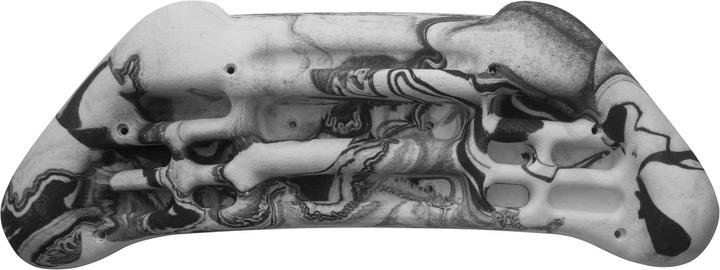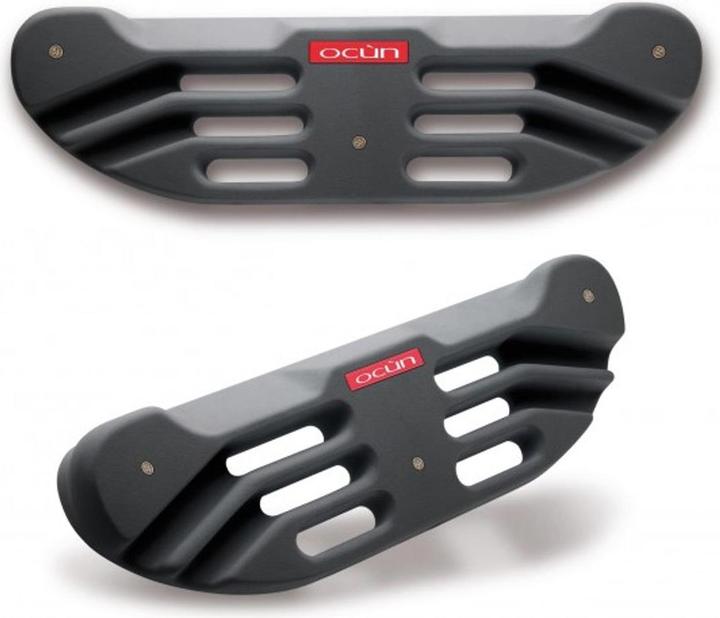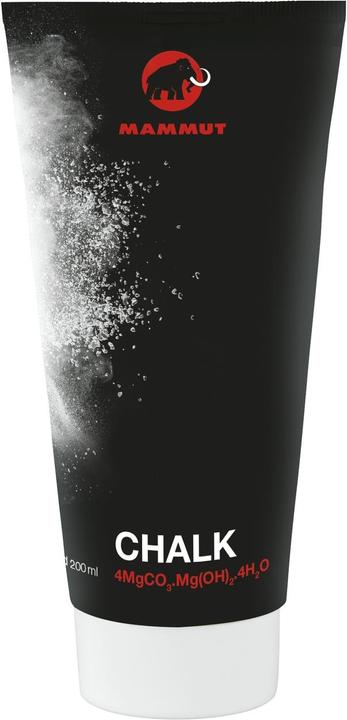

Hangboard training: you too can become a ninja warrior
When training with your own body weight, grip strength is usually neglected. With a hangboard, you get fingers of steel.
My body is tense from the tips of my fingers to the tips of my toes. Everything hurts. I've only been on the hangboard for five seconds. Training on this infernal piece of equipment is one thing above all: bloody exhausting. The fingerboard or training board, as the thing is also known, is a board with handles of different depths that you can hang onto.
Where does it come from?
The hangboard was probably invented in the early 80s. A similar device was first mentioned in a training manual by John Bachar. He spoke of hanging on the fingertips of simple wooden handles. This was intended to help climbers train their grip strength, especially out of season. Today, you can find hangboards in all shapes, colours and materials.
[[small:]]
Where does it go?
I have the Antworks Strong Ant 3 hanging in my home, which is modular and can be extended with a pull-up bar, among other things. Perfect for bodyweight training.
Hangboards are mounted above the door frame or on specially designed brackets. Of course, you can also build your own training station. There are no limits to your imagination. When mounting above the door frame, pay attention to the material of your wall. You should only attach it to concrete walls. On brick walls or weaker materials, it could break out.
How it works
Hangboarding puts enormous strain on the tendons and joints of your fingers. That's why you should already have a certain amount of grip strength before training - after all, the boards were developed for climbers. They already have an iron grip. Alternatively, you can also use a fitness band or a climbing aid. This will take some of the weight off your shoulders. If you are a beginner, you should make sure that your future hangboard has deep handles. This will give you enough surface area to hold the weight
.

A good warm-up is also important. I usually do a few sets of pull-ups before I venture onto the board. I've been training on the board for four months now and still use the deepest or second-deepest fingerboard grips. I was a complete novice at the beginning and have little climbing experience, but have been doing calisthenics for a few years now. My goal is to build up my strength so that I have more power on the pole. For beginners like me (still), static training is recommended. The risk of injury is lower here. This can consist of either strength or strength endurance workouts.
For strength workouts, hold on to a handle for as long as possible. Ten to 15 seconds is ideal at the beginning. Then take a 30-second break and hang on again. Do this four times to complete a set. For a complete workout, do five sets.
For the strength endurance workouts, hang on to the board for seven seconds and then take a short break of three seconds. Do this six times. Five sets are also ideal here. You can time the whole thing with an app. It doesn't matter which one, if you search for Hangboard in the App Store or Google Play, you're sure to find one you like. Of course, a Tabata timer will also do the trick.


Your posture is important for both types of workout. It starts with your fingers. You should keep your fingers as open as possible. Your fingertips should point upwards when you hang. This puts less strain on your joints than the upright position. You may not be able to hang as long, but the risk of injury is also reduced. If you don't have enough strength, you can alternatively position your fingers halfway up. Magnesium is recommended so that you slip less. Preferably liquid, this will also keep your home clean.


You should make sure that you don't simply sag. Activate your muscles so that you put less weight on your joints. Don't keep your arms straight, but bend your elbows slightly and pull your shoulders down, tilt your pelvic floor forwards and tighten your abdominal muscles. Stretch your legs slightly forwards. In short: don't hang from the handles like a sack of potatoes. This protects your joints and also trains other muscle groups.
What's the point?
Since I started training in May, I've already completed over 50 workouts. I try to train grip strength three times a week. Usually after I've trained another part of my body.
Hanging is already much easier for me than it was at the beginning. I have to stop myself from switching to smaller grips now. Hangboards have a reputation for a very high risk of injury. As tendons and joints take longer to adjust to a new load than muscles, I'd rather not take too big a risk.
I have noticed some improvements with calisthenics. I can hold on to the bar for much longer. I've also increased my pull-up repetitions. I now even have enough strength to hold a front lever on the lowest grip. I'm definitely going to keep going and look forward to doing hangboard gymnastics like the guys and girl from Antworks in the video above one day.

From big data to big brother, Cyborgs to Sci-Fi. All aspects of technology and society fascinate me.







